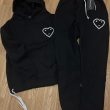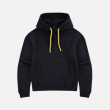Stair runners have long been a favored choice for homeowners and building professionals looking to enhance the appearance and functionality of staircases. These versatile coverings add a layer of safety, comfort, and aesthetic appeal to stairs, which are often high-traffic areas in any home or building. As stair runner designs evolve, they seamlessly blend practicality with style, offering solutions that cater to diverse tastes and performance needs. This article provides an authoritative yet accessible overview of stair runner designs, helping professionals and homeowners make informed choices for their projects.
Understanding the Purpose of Stair Runners
Before diving into design trends and product options, it’s essential to understand why stair runners are a popular choice in both residential and commercial settings. Stair runners serve multiple practical purposes:
Safety: They provide extra traction, reducing the risk of slips and falls, especially on hardwood, tile, or other slippery stair surfaces.
Noise Reduction: Stair runners help muffle footsteps, which is particularly valuable in multi-level homes, hotels, and office buildings.
Protection: By covering stairs, runners protect underlying surfaces from wear, scratches, and damage.
Comfort: Soft materials provide a cushioned surface underfoot, enhancing comfort during use.
Combining these benefits with attractive designs makes stair runners an excellent investment that boosts both the utility and look of staircases.
Popular Stair Runner Designs: Balancing Practicality and Style
When selecting stair runner designs, professionals often consider patterns, materials, and installation styles that complement interior décor while maximizing functionality. Here are some popular design approaches:
1. Classic Stripes and Borders
Striped stair runners remain a timeless choice, offering a clean, linear look that visually elongates the staircase. Borders add a framing effect that enhances the runner’s presence without overwhelming the space. This design works well with both traditional and modern interiors, providing a refined, structured appearance.
From a practical perspective, striped patterns are excellent at disguising dirt and wear, making them ideal for busy households or commercial buildings.
2. Geometric and Contemporary Patterns
For modern homes and commercial spaces, geometric stair runner designs are gaining traction. These include chevrons, hexagons, and abstract shapes that add visual interest and texture. Geometric patterns can turn a staircase into a statement piece, drawing the eye upward and enhancing the architectural flow of the space.
Many contemporary stair runners are made with durable synthetic fibers that are stain-resistant and easy to clean—key factors for high-traffic environments.
3. Floral and Botanical Motifs
Floral and botanical stair runner designs offer a softer, more decorative option. These patterns bring warmth and nature-inspired beauty to staircases, ideal for classic or cottage-style interiors. The intricate designs can be woven or printed into wool, nylon, or blended fibers, combining beauty with durability.
While floral patterns might require more frequent cleaning to maintain their appeal, modern stain-resistant finishes can alleviate this concern.
Material Choices and Their Impact on Performance
The composition of a stair runner greatly affects its functionality and visual appeal. Here are the common materials used in stair runners, each offering a unique combination of practicality and style:
Wool: Known for its durability, softness, and natural stain resistance, wool is a premium choice for stair runners. It is fire-retardant and provides excellent sound insulation, making it suitable for upscale homes and commercial spaces.
Nylon: Nylon stair runners are appreciated for their durability and cost-effectiveness. They withstand frequent use and retain their color brightness over time. This synthetic fiber is ideal for high-traffic areas where durability is paramount.
Polypropylene: Often used in budget-friendly stair runners, polypropylene offers water resistance and ease of cleaning. It’s a practical option for homes with pets or children.
Blends: Combining natural and synthetic fibers allows stair runners to balance the benefits of softness, durability, and stain resistance.
Installation Considerations for Maximum Effectiveness
Proper installation of stair runners is crucial to achieving both their aesthetic potential and safety benefits. Professionals often recommend:
Using a high-quality underlay or padding beneath the runner to add cushioning and extend the runner’s lifespan.
Securing the runner firmly with stair rods or adhesive strips to prevent slipping or bunching.
Ensuring precise measurements for each step to allow a snug fit and consistent appearance.
By combining professional installation techniques with well-chosen designs and materials, stair runners can maintain their style and functionality for years.
Practical Tips for Choosing the Right Stair Runner Design
For professionals advising homeowners or clients, here are some key tips to balance style and practicality:
Consider the foot traffic volume—high-traffic areas need tougher materials and patterns that hide dirt.
Match the runner design with existing décor** for a cohesive look, whether traditional, modern, or transitional.
Prioritize safety features, such as non-slip backing and secure installation methods.
Factor in maintenance requirements and choose materials that align with the client’s willingness and ability to care for the runner.
Explore customization options to perfectly match the stair dimensions and personal style preferences.
Conclusion
Stair runner designs today offer a dynamic combination of practicality and style that can enhance any staircase, whether in a home or commercial building. By understanding the variety of patterns, materials, and installation methods, professionals and homeowners can make choices that not only elevate the aesthetic appeal of their spaces but also improve safety, comfort, and durability. With the right stair runner design, staircases transform from mere functional elements into attractive, inviting architectural features.











